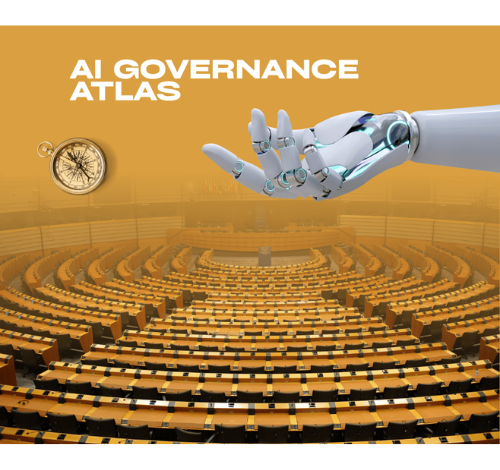
Any company that ships an AI model today, whether it predicts loan defaults or suggests a workout plan, falls under a huge list of new AI regulations. The proliferation of new laws, frameworks, and sector-specific guidelines has created a complex and often contradictory web of obligations. Without a systematic approach, teams risk project delays, unforeseen architectural costs, and serious legal penalties.
This article introduces the AI Governance Atlas, a methodological framework for understanding and managing AI compliance. I organized the rules into four layers, from universal legal principles to product-specific rules. This will provide a clear navigational tool for technical teams, legal counsel, and business leaders.
Defining the Foundational Components
To map the territory, we must first define its core components. Two key distinctions classify nearly every rule in the AI governance world.
- Binding Force:The Distinction Between “Hard” and “Soft” Law
This defines the legal weight of a rule and the consequences of non-compliance.
- Binding (Hard Law): These are the rules and regulations that carry direct legal penalties. Non-compliance with such laws can trigger significant fines, operational injunctions, or other legal action. The EU AI Act is the primary example.
- Non-binding but Authoritative (Soft Law): Frameworks, standards, and codes of practice that are technically voluntary. The U.S. NIST AI Risk Management Framework (RMF) is a clear example. While not following these rules does not trigger direct fines, it carries substantial business risk, including damaged investor confidence, higher insurance premiums, and negative inferences in legal proceedings.
- Scope:The Distinction Between “Horizontal” and “Sector-Specific” Rules
This determines how broadly a rule applies.
- Horizontal (Cross-Sector) Rule: A law that applies to AI systems regardless of their domain. Examples include the EU AI Act, Brazil AI Act.
- Sector-Specific Rule: A law or guidance that applies only within a particular industry sector. For example, high-stakes domains like healthcare (FDA SaMD guidance), finance (Basel Committee SR 11-7), and automotive (UNECE WP.29).
The Four Levels of the AI Governance Atlas
The Atlas organizes compliance into a logical hierarchy, moving from the broadest principles to the most specific applications.
LEVEL 0: The Foundation : Universal Legal Principles
This tier captures the long-standing digital laws that were in place well before the current AI focus. It includes GDPR-style data privacy laws, consumer protection regulations (CCPA), and foundational anti-discrimination laws. These are the “table stakes” for any digital product, and compliance here is a prerequisite for addressing AI-specific rules.
LEVEL 1: Horizontal AI Laws
This level contains the broad, cross-sector AI laws now being enacted globally. An organization’s first step in AI-specific compliance is to map its systems to the risk classifications defined in these horizontal laws (e.g., the EU AI Act’s unacceptable, high, limited, or minimal risk tiers).
LEVEL 2: Sector-Specific Overlays
Here, the general rules of Level 1 are augmented by domain-specific requirements. These overlays add deeper, more stringent obligations for particular industries. For example, a high-risk AI system under the EU AI Act (Level 1) used in a medical context must ‘also’ comply with the FDA’s guidance for Software as a Medical Device (Level 2).
LEVEL 3: Cumulative Compliance Burden & Product-Specific Overheads
This level addresses the complex interactions that arise when a single product or service falls under multiple sector-specific overlays. The total compliance burden is often greater than the sum of its parts, creating unique engineering and architectural challenges. The case study section illustrates the cumulative effect of multiple compliance burdens. The burden also increases with geography. For example, if a product is initially sold in France and now expands to Brazil then the product should comply with Brazil’s AI regulations.
LEVEL 4: Proactive Governance via Voluntary Standards
This final level represents the strategic approach to managing compliance complexity. It consists of comprehensive, voluntary standards like ISO 42001 and frameworks like the NIST AI RMF. These frameworks are designed to be holistic. By proactively building an AI management system that aligns with a Level 4 standard, an organization can implement the robust data governance, risk management, and documentation processes that satisfy the requirements of multiple Level 1, 2, and 3 obligations simultaneously. This shifts the organization from a reactive posture to a proactive and efficient one.
A Case Study to understand the “Cumulative Compliance Burden”:
The total compliance burden is often greater than the sum of its parts, creating unique engineering and architectural challenges. The following analysis of a real-world digital health platform illustrates this cumulative effect.
Product Profile: HealthNeem.com
- Core Functions: An AI-driven platform that provides users with personalized wellness and nutritional plans based on self-reported health data, lifestyle habits, and goals.
- Subscription payments: Offers premium subscriptions for advanced analytics and sells curated health products (e.g., vitamins, supplements) directly through its integrated e-commerce store.
- Jurisdiction: Operates within the European Union.
Compliance Stack Analysis:
- 1. Level0 & 1 (Baseline): As a platform handling sensitive personal information, HealthNeem must comply with GDPR (Level 0). Because its AI system provides personalized health recommendations, it is classified as a “high-risk” system under the EU AI Act (Level 1), requiring stringent data governance, risk management, and documentation.
- 2. Level 2 (Primary Sector): The platform’s core function places it squarely within the “Healthcare & Wellness” sector. This triggers a Level 2 overlay, requiring adherence to regulations governing digital health tools and the handling of Protected Health Information (PHI).
- 3. Level3 (Cumulative Burden Trigger): The complexity arises from HealthNeem’s business model. By processing payments for subscriptions and selling products through an e-commerce store, the platform also functions as a financial and retail entity. This pulls in an entirely different set of Level 2 overlays from the “Fintech & E-commerce” sector, most notably the Payment Card Industry Data Security Standard (PCI-DSS).
The platform now faces a classic Level 3 challenge. Its architecture must be designed to handle two fundamentally different types of sensitive data – PHI and payment card information, under two separate and non-overlapping regulatory regimes. The rules for data segregation, encryption, access control, and breach notification for health data are different from those for financial data. This cumulative burden forces a more complex and costly system design than would be required to comply with either sector’s rules in isolation.
Operationalizing the Atlas: From Framework to Living System
A static framework in a dynamic field has limited value. The true utility of the AI Governance Atlas lies in its adoption as a living, continuously updated system within an organization. To maintain its relevance and utility:
- Time-Stamp All Data: The regulatory field moves weekly. Every assertion within the atlas should be dated (e.g., “Data as of October 2025”).
- Maintain a Regulatory Timeline: Track the “first effective date” for major regulations to inform product and engineering roadmaps.
- Use Actionable Formats: The atlas should be maintained as a filterable database or spreadsheet, tagged by level, binding force, and sector, to allow teams to query it for their specific needs.
Conclusion
AI rules are multiplying fast, creating a maze of requirements rather than random chaos. A layered playbook like the AI Governance Atlas turns that maze into a step-by-step audit pipeline. Starting with universal laws and rising to voluntary, all-in-one standards, the Atlas lets teams 1) spot obligations early, 2) bake safeguards into system design, and 3) shift compliance from a last-minute headache to a core ingredient of trustworthy, innovative products.




